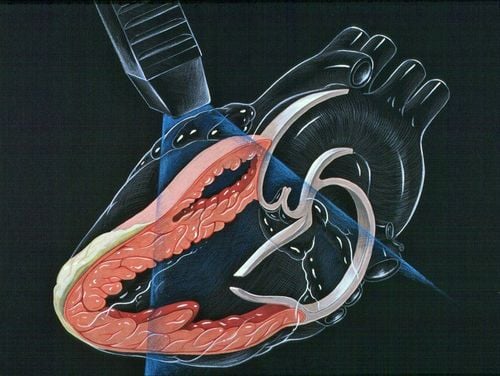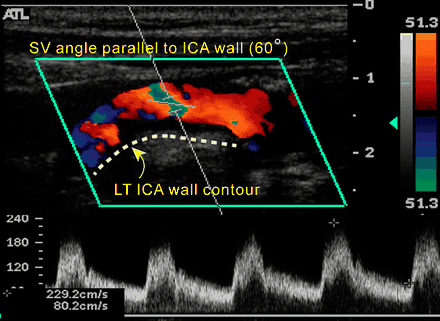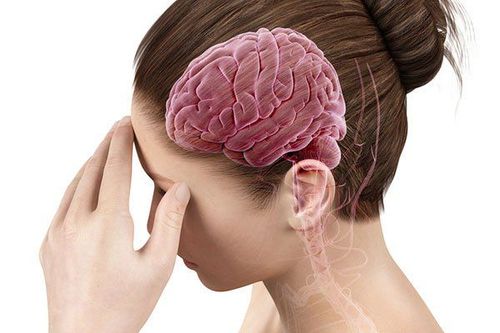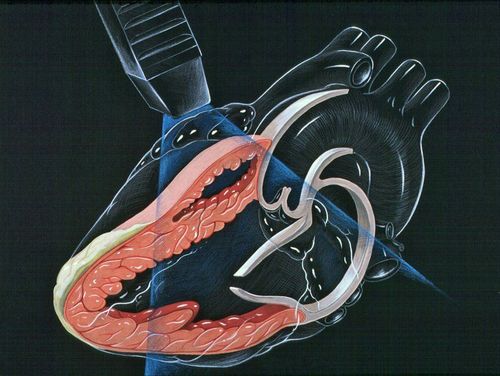This is an automatically translated article.
The article is professionally consulted by Master, Doctor Le Xuan Thiep - Department of Diagnostic Imaging - Vinmec Ha Long International General HospitalOne of the dangerous causes of cerebral vascular accident today is the narrowing of the internal carotid artery, which causes the blood flow to nourish the brain to be blocked and has a high risk of causing death for the patient. For the treatment of carotid stenosis to prevent stroke, carotid ultrasound is considered a great adjunct to the evaluation and stenting of the carotid artery in these patients.
1. Carotid artery stenosis treatment
The carotid artery is a large artery in the body, located in the neck region, including the left carotid artery and the right carotid artery where the pulse of the pulse can be felt on both sides of the neck. The carotid artery holds an extremely important function in the body, which is to transport blood from the heart to the brain to nourish the brain to perform important functions.
Carotid arteries can be narrowed due to the accumulation of certain substances that form plaque in the blood vessels, blocking blood flow to the brain. In severe cases, atherosclerotic plaque will form a thrombus that completely occludes a blood vessel, preventing blood from reaching the brain, causing a stroke, possibly in both the elderly and the young. A carotid stenosis stroke can be an ischemic stroke or, in some cases, a transient ischemic attack if symptoms persist for 24 hours. Some predisposing factors that cause atherosclerotic plaque to narrow the carotid artery can be smoking, high blood cholesterol status, people with high blood pressure, fibromuscular dysplasia and the patient himself or his family having high blood pressure. People with diabetes are also risk factors for the disease.
In the early stages, carotid artery stenosis often has no clinical symptoms, only discovered by chance if the patient performs a general physical examination or is discovered through examination for some other pathologies such as Cardiovascular or thyroid exams. Because carotid artery stenosis can cause transient cerebral ischemia and stroke, when it progresses to this stage, there will be a number of clinical symptoms including:

Nhồi máu não có thể dẫn tới đột quỵ do hẹp động mạch cảnh
Weakness, paralysis of both arms and legs Blurred vision or complete loss of vision for a period of time and then return to normal Difficulty speaking, unable to speak suddenly. The above symptoms will usually disappear automatically after 24 hours if the patient has a transient ischemic attack, but this is also a warning sign that a stroke may occur within a short period of time. Therefore, patients should not be subjective when these symptoms have passed, but must immediately go to a medical facility for timely diagnosis and treatment. Conversely, in case these symptoms persist for more than 24 hours or even longer, the patient is suffering from a cerebrovascular accident, requiring immediate hospitalization for treatment.
Regarding the method of treating carotid artery, currently, the most popular and effective is surgery or vascular intervention:
For surgery, the patient will be performed surgery to remove the existing atherosclerotic plaque in the carotid artery. coronary artery helps to reduce the risk of having a cerebrovascular accident. This method is usually indicated when the patient has typical clinical symptoms and the carotid stenosis is quite severe. As for the vascular intervention method, this is a special procedure that helps the patient to widen the lumen, help blood flow to the brain and help treat or prevent a cerebrovascular accident. The patient will have a carotid stent placed, that is, a specialized instrument is inserted into the body through a hole poked in the femoral artery, from which it is gradually raised to the damaged carotid artery, then angioplasty is performed. widen the lumen and at the same time squeeze the atherosclerotic plaques in the vessel against the vessel wall so that blood can flow at that moment. Carotid stenting is considered an emergency method of cerebral infarction or prevention of cerebral infarction caused by carotid artery stenosis, a technique that is less invasive to the patient's body but still brings effective treatment. very high value.
2. Ultrasound treatment of carotid stenosis
During the examination and diagnosis, after examining all the physical symptoms, if the treating doctor determines that the patient is likely to have carotid artery stenosis, the next option will be Doppler ultrasound Carotid artery to detect stenosis, evaluate as well as predict the degree of stenosis of the patient, from which the next treatment indication can be given to the patient. Ultrasound treatment of carotid stenosis is considered a non-invasive, painless method for the patient and is performed rapidly to detect carotid stenosis in that patient.
The patient will be placed at the neck with a transducer that emits ultrasound waves with the ability to make the blood cells as well as the vascular wall cells to be able to recognize the features of these structures, helping to Doctors can know the condition inside the vessel, whether there is blockage, narrowing or plaque, from which to have the next treatment. Specifically, ultrasound treatment of coronary artery stenosis is indicated in some cases as follows:
Transient cerebral infarction or cerebral infarction Formation Temporary vision loss Arteritis Aneurysm
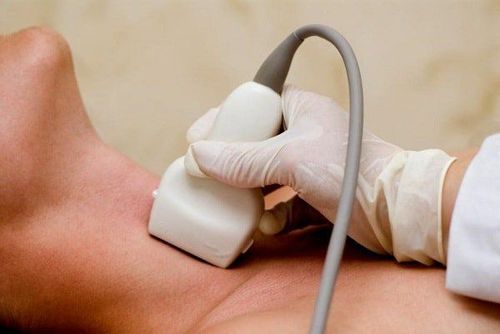
Siêu âm điều trị hẹp động mạch cảnh đóng vai trò vô cùng quan trọng
Arteriovenous - venous fistula Thrombosis Thickening of the inner layer in some organ systems such as cardiovascular, nervous, endocrine... For the case of ultrasound detection of atheroma causing narrowing of the carotid artery, the image On ultrasound, atheroma can be seen as soft, fibrous, calcified, combined or complicated features, which will show different levels of pathology, from low risk to high risk. high muscle mass and also a very high risk of atherosclerotic stroke.
3. Conclusions of ultrasound in the treatment of carotid stenosis
Based on clinical examination along with ultrasound treatment of carotid stenosis, doctors can make a diagnosis as well as appropriate treatment indications for patients with carotid stenosis caused by atherosclerotic plaque. minimize the risk of cerebrovascular accident for patients in the future.
Currently, Vinmec International General Hospital is fully equipped with modern ultrasound equipment to effectively treat carotid stenosis. The system of modern ultrasound, color Doppler, and pulse Doppler machines, which are completely imported from abroad, helps to bring clear images, effectively supporting the diagnosis of doctors. The technicians are all experienced and highly qualified in the field of diagnostic imaging, trained regularly and continuously, so they can easily diagnose strange and rare diseases accurately.
If you have a need for ultrasound treatment of carotid artery stenosis at Vinmec, please book an appointment directly at the website right away or contact the hotline for detailed advice.
Please dial HOTLINE for more information or register for an appointment HERE. Download MyVinmec app to make appointments faster and to manage your bookings easily.




